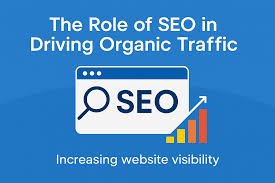SEO copywriting is the art of creating content that appeals to both search engines and readers. It’s not just about inserting keywords; it’s about crafting messages that attract, engage, and convert. When done right, SEO copywriting boosts rankings, increases organic traffic, and inspires action. Here’s how to write content that performs well and connects with your audience.

Understand Your Audience
Effective SEO copywriting starts with knowing who you’re writing for. Understanding your audience’s needs helps you create content that resonates.
How to Know Your Audience:
-
Research demographics such as age, location, and interests.
-
Identify their pain points and questions.
-
Use social media polls, surveys, or analytics tools for insights.
-
Study competitors to see what topics engage readers.
Tailoring your message to your audience ensures your content stays relevant and valuable.
Conduct Smart Keyword Research
Keywords guide your content and help search engines understand its topic. However, unnaturally stuffing them hurts readability and rankings.
Keyword Research Tips:
-
Use tools like Google Keyword Planner, Ahrefs, or SEMrush.
-
Focus on long-tail keywords that reflect search intent.
-
Analyze competitors’ top-ranking content for keyword ideas.
-
Include keywords naturally in titles, subheadings, and paragraphs.
Strategic keyword placement attracts the right audience without compromising flow.
Write Compelling Headlines
Your headline is the first thing people see, so it must grab attention instantly. A strong title can determine whether readers click or scroll past.
Tips for Effective Headlines:
-
Include your main keyword naturally.
-
Keep it under 60 characters for better display on search results.
-
Use power words that evoke emotion or curiosity.
-
Test different headline styles like “how-to” or list-based formats.
A captivating headline increases click-through rates and sets the tone for your content.
Create an Engaging Introduction
An engaging introduction hooks readers and keeps them reading. It should quickly address the reader’s problem and promise a clear solution.
Elements of a Strong Introduction:
-
Start with a question or statistic.
-
Mention the pain point your audience faces.
-
Explain what the post will cover.
-
Keep it short and relevant.
A clear and relatable opening encourages users to stay longer, reducing bounce rates.
Focus on Readability and Flow
Readable content keeps visitors engaged and encourages them to act. Long, cluttered paragraphs discourage readers from finishing your article.
Ways to Improve Readability:
-
Use short sentences and paragraphs.
-
Break up text with subheadings, lists, and bullet points.
-
Use active voice instead of passive.
-
Include transition words like “however,” “therefore,” and “moreover.”
Easy-to-read content performs better with both users and search engines.
Optimize for Featured Snippets
Featured snippets appear at the top of Google’s results and drive significant organic traffic. Structuring your content properly increases your chances of being featured.
How to Optimize for Snippets:
-
Answer questions directly in concise sentences.
-
Use numbered lists or bullet points where possible.
-
Include “what,” “how,” and “why” phrases in headings.
-
Provide clear, factual information.
When your content provides quick, valuable answers, Google rewards it with higher visibility.
Use Emotional Triggers and Persuasive Language
Good SEO copywriting connects emotionally with readers. It inspires them to take action—whether that means subscribing, buying, or sharing.
Emotional and Persuasive Writing Techniques:
-
Use storytelling to make your message relatable.
-
Focus on benefits rather than just features.
-
Incorporate strong calls to action like “discover,” “get,” or “start.”
-
Appeal to readers’ desires, fears, or goals.
Emotionally charged copy not only attracts but also converts.
Incorporate Internal and External Links
Links enhance the credibility and depth of your content. Internal links help users navigate your site, while external links provide additional value.
Best Practices for Linking:
-
Link to relevant pages within your own website.
-
Use descriptive anchor text.
-
Reference reputable sources to back up claims.
-
Avoid excessive linking that distracts readers.
A balanced linking strategy strengthens SEO and builds trust.
Optimize Meta Tags and Descriptions
Meta titles and descriptions influence how your content appears in search results. They can make or break your click-through rate.
Optimization Tips:
-
Include your primary keyword near the start.
-
Write a unique title for each page.
-
Keep descriptions under 160 characters.
-
Highlight the benefit or result of reading your content.
Well-crafted meta tags attract more clicks and improve visibility.
Use Visuals to Enhance Content
Visual elements make your content more engaging and easier to understand. They also help break up long text sections.
How to Use Visuals Effectively:
-
Add images, infographics, or short videos.
-
Use descriptive file names and alt text for SEO.
-
Keep images optimized for fast loading.
-
Ensure visuals support your message rather than distract from it.
Visuals make your content more appealing and improve retention.
Analyze and Update Content Regularly
SEO copywriting doesn’t end after publishing. Regular updates keep your content fresh and competitive.
Steps for Ongoing Optimization:
-
Track rankings, engagement, and conversions using analytics tools.
-
Update outdated statistics or examples.
-
Add new internal links to recent content.
-
Refresh titles or meta descriptions to improve performance.
Consistent updates signal to search engines that your site remains active and relevant.
Conclusion
SEO copywriting blends creativity with strategy. By understanding your audience, using keywords wisely, writing engaging content, and keeping it updated, you can drive both traffic and conversions. Great SEO copy doesn’t just attract visitors—it inspires them to act. With these proven techniques, you can turn every piece of content into a powerful marketing asset that supports your long-term growth.











